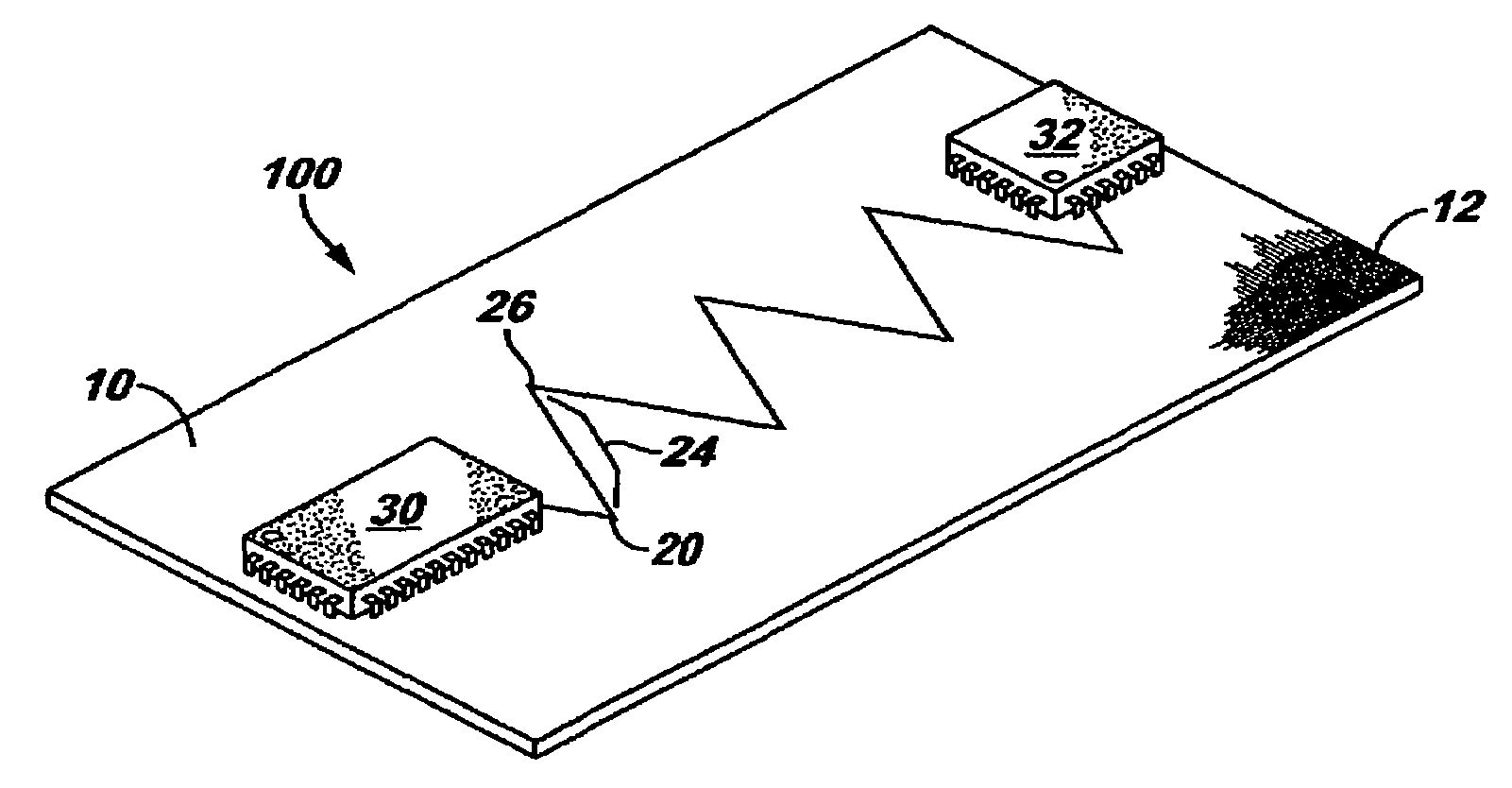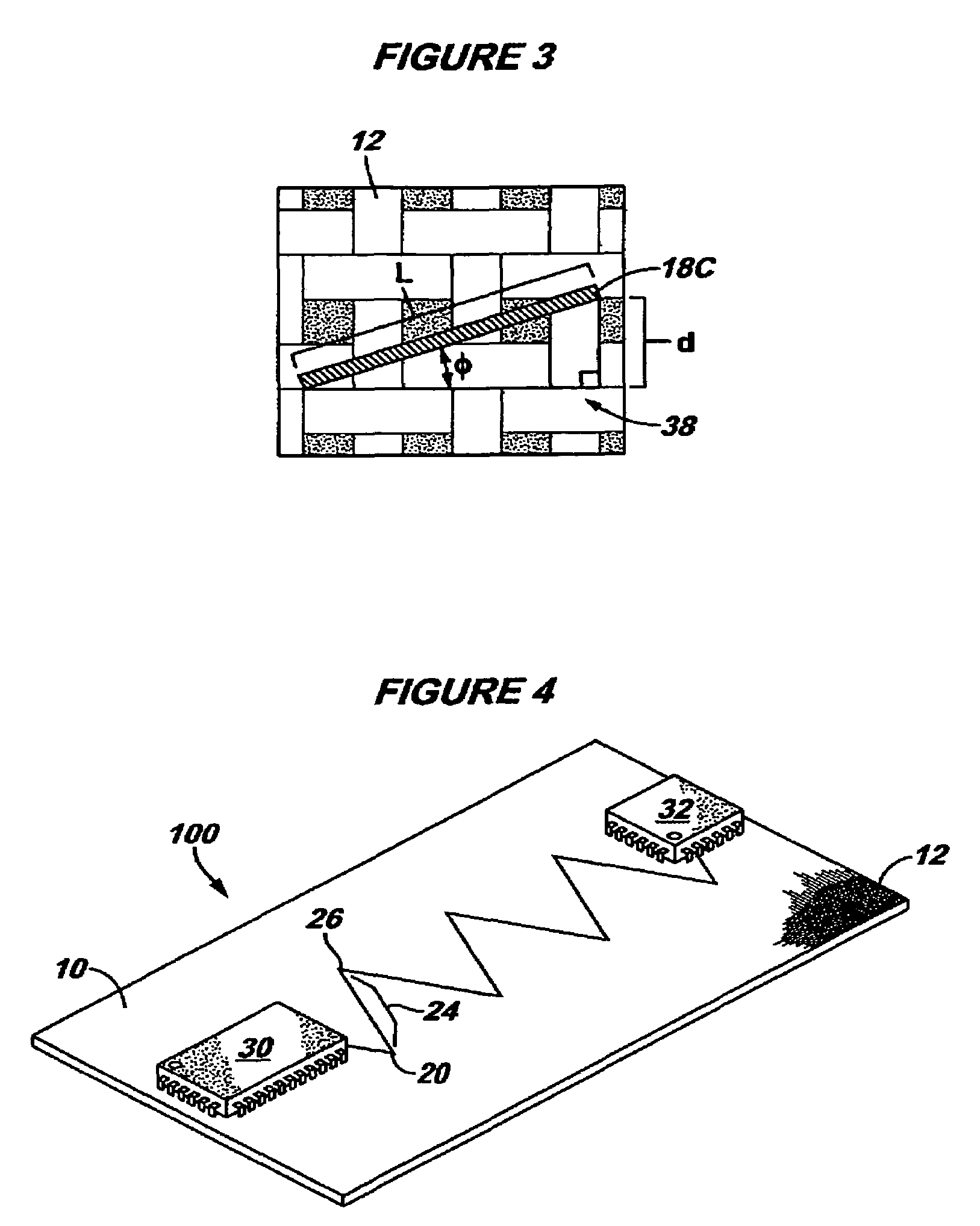Printed circuit board trace routing method
a technology of printed circuit boards and routing methods, which is applied in the field of routing traces on printed circuit boards, can solve the problems of difficult to predict the signal propagation speed along the trace, the relative position of the relative positions of the relative positions of the relative positions, and the possibility of impedance variations between the traces
- Summary
- Abstract
- Description
- Claims
- Application Information
AI Technical Summary
Problems solved by technology
Method used
Image
Examples
Embodiment Construction
[0021]In accordance with some embodiments described herein, an I / O routing pattern method is disclosed, for use with heterogeneous printed circuit boards (PCBs), such as those embedded with a reinforcement material, for example, a fiberglass weave. Traces are routed on the PCB so as to reduce sensitivity to changes in the dielectric constant (Dk), which are brought about by the strands of reinforcement material contained within the PCB laminate. The method minimizes the impact of local variations, such as the Dk, time of flight, and capacitance variations, that are observed with traditional routing methods on heterogeneous PCBs.
[0022]In some embodiments, traces are routed between circuits on the PCB in a zig-zag pattern, such that multiple strands of reinforcement material are disposed beneath each portion of the zig-zag trace. The strands are embedded into the PCB in a known manner, such as with an FR-4-type PCB, in which glass strands are aligned at right angles to one another in ...
PUM
| Property | Measurement | Unit |
|---|---|---|
| Length | aaaaa | aaaaa |
| Capacitance | aaaaa | aaaaa |
| Dielectric constant | aaaaa | aaaaa |
Abstract
Description
Claims
Application Information
 Login to View More
Login to View More - R&D
- Intellectual Property
- Life Sciences
- Materials
- Tech Scout
- Unparalleled Data Quality
- Higher Quality Content
- 60% Fewer Hallucinations
Browse by: Latest US Patents, China's latest patents, Technical Efficacy Thesaurus, Application Domain, Technology Topic, Popular Technical Reports.
© 2025 PatSnap. All rights reserved.Legal|Privacy policy|Modern Slavery Act Transparency Statement|Sitemap|About US| Contact US: help@patsnap.com



